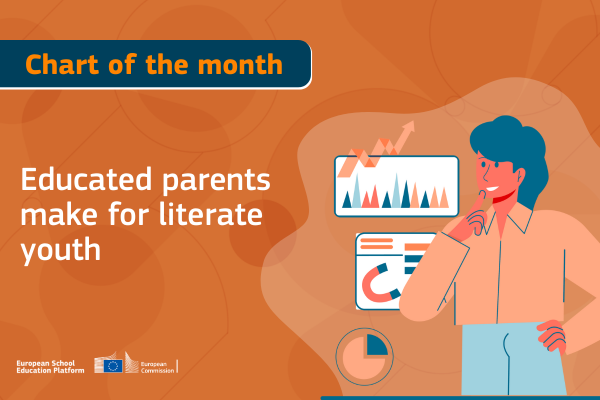Educated parents make for literate youth

Children with less-educated parents are more likely to achieve lower educational levels than those whose parents have higher education. This pattern exists in both advanced and emerging countries, and is closely linked to economic disparities. In countries with high income inequality, access to quality education is often skewed in favour of wealthier families.
Children from affluent backgrounds tend to attend well-funded schools, receive private tutoring and benefit from enriched learning environments, resulting in higher academic achievement and better job prospects. Economists refer to this link between income inequality and the persistence of educational attainment across generations as the ‘educational Great Gatsby Curve’, inspired by F. Scott Fitzgerald’s 1925 novel The Great Gatsby, which explores themes of wealth inequality.
The OECD Programme for the International Assessment of Adult Competencies (PIAAC) measures literacy, numeracy and adaptive problem solving of people aged 16–65 across the world through its Survey of Adult Skills. The survey has been conducted twice, in 2012 and 2023. This Chart of the Month examines how literacy skills among young adults (aged 16–24) can vary based on parental education levels in 2023 and how these differences have evolved since 2012.
Difference in literacy skills between 16–24-year-olds with high‑educated parents and low/medium-educated parents (2012–2023, score points)
Source: OECD (2024), Table A.3.21 (L)
Note: Caution is required when interpreting data for Poland due to its high share of respondents with unusual response patterns. Data for cycle 1 were collected in 2012 for all countries, except for Hungary (2017) and Lithuania (2015). All differences in 2023 are statistically significant. Statistically insignificant changes between 2012 and 2023 are in a lighter tone. Countries are shown in descending order according to the difference in score points in 2023 between young adults with high‑educated parents and low/medium‑educated parents. Respondents are categorised as having high‑educated parents if at least one parent attained tertiary education and as having low/medium‑educated parents if none of the parents attained tertiary education.
In all 17 EU education system that participated in both Programme for the International Assessment of Adult Competencies (PIAAC) surveys, young adults with high‑educated parents consistently score higher than those with low/medium-educated parents. The differences range from 44 score points in Hungary to 15 in the Netherlands, and all are statistically significant. To put these differences into perspective, the average score among all OECD participating countries and economies is 260 points, with a standard deviation (how dispersed the participating education systems’ performances are relative to the OECD average) of 55 points. This means that the observed gaps are substantial in many EU education systems.
Between 2012 and 2023, the overall situation remained largely unchanged. The gaps in literacy skills between high-educated families and those from less-educated backgrounds saw only minor, statistically insignificant changes, except in Sweden (+22 points) and Hungary (+12 points), where the gap widened. With no significant progress over the past decade, parental education continues to strongly influence young people’s literacy skill development, highlighting the ongoing challenge of improving educational equity.
Background
The Union of Skills aims, among other things, to deliver higher levels of basic skills, including in literacy: by 2030, the share of underachieving pupils in literacy should be less than 15%, while the share of top performing pupils should be at least 15%.
The Action Plan on Basic Skills indicates that in 2026 the European Commission will work with EU countries to pilot a Basic Skills Support Scheme. The scheme will aim to address basic skills deficiencies so that every child can reach an adequate level by the end of compulsory schooling. In 2026 the Commission will also launch an EU literacy coalition, involving governments, businesses and libraries, to create a community around literacy, raise awareness about the literacy crisis and encourage young people to read for pleasure.
Disclaimer: The chart of the month does not constitute a policy position of the European Commission. Neither the European Commission nor any person acting on behalf of the Commission is responsible for any use made of the chart.
Additional information
-
Education type:School EducationVocational Education and Training
-
Target audience:TeacherStudent TeacherHead Teacher / PrincipalLibrarianPedagogical AdviserTeacher EducatorResearcherParent / Guardian
-
Target audience ISCED:Primary education (ISCED 1)Lower secondary education (ISCED 2)Upper secondary education (ISCED 3)


